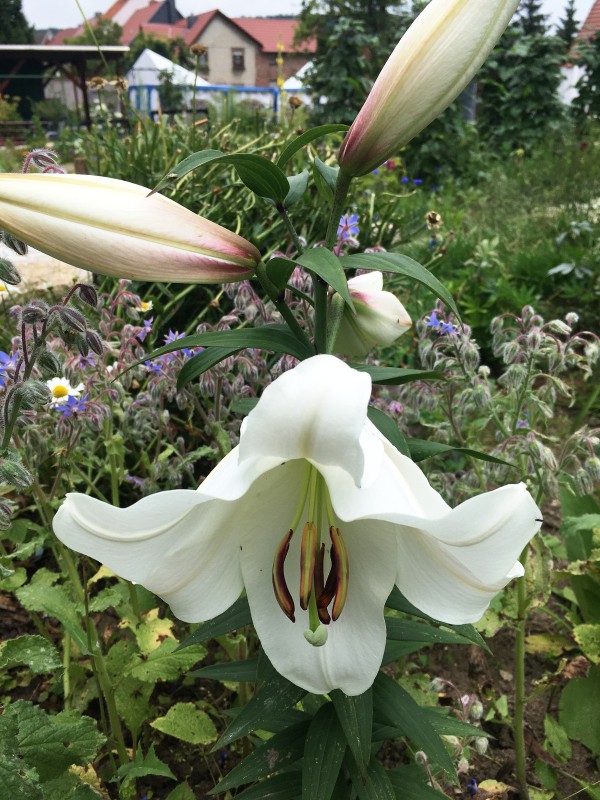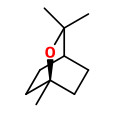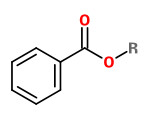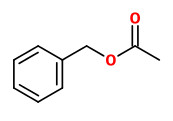Lilium regale E. H. Wilson syn.Lilium myriophyllum E. H. Wilson - Liliaceae - 岷江百合 min jiang bai he (chin.), king's lily, regal lily, royal lily, Königs-Lilie
Erect herbaceous perennial, up to 2m tall, native to China (rocky slopes, river banks of Sichuan), cultivated elsewhere as ornamental; bulb broadly ovoid, ca. 3.5 cm in diam.; leaves narrowly linear, 6-8cm long; flowers white, 10-15cm long, funnel or trumpet shaped, white with yellow throat, flushed purple outside, very fragrant. Flora of China online
Major flower scent compounds like e.g. 1,8-cineole (60.8-68.6%), methyl benzoate (7.2-8.2%), α-pinene (5.1-6.4%), and limonene (4.5-7.0%) were similar in the day and night, but relative emission amounts are much higher at night, except benzyl acetate (4.8% day; trace at night) and hexyl acetate (1.7% day; 0.1% night). The scent at day is reminiscent of Ylang-ylang because of emitted 1-methoxy-4-methylbenzene (p-methylanisole; 0.2-0.8%) combined with methyl benzoate and benzyl acetate. Other olfatory interesting components of the flower scent were phenylacetaldehyde (0.2-0.8%), methyl salicylate (0.1-1.8%), phenylethyl acetate (1.3-1.4%) e.g.
„… 1,8-cineole, (E)-beta ocimene, α-pinene, limonene, myrcene, β-pinene, α-terpineole, and sabinene were emitted simultaneously. This phenomenon, which is called 'cineole cassette', also existed in other species, such as L.sulphureum, some Nicotiana species, and Salvia officinale. These monoterpene products may be the products of a single multi-product enzyme (1,8-cineole synthase), but their biosynthesis requires further study.“
[Ying, K., Bai, J. R., Kong, X. D., Dou, X. Y., & Wang, N. Y., „Floral scent composition of Lilium regale Wilson.“ In III International Symposium on the Genus Lilium, Acta horticulturae, 1027 (2014),81-86]
„The scented and light-scented Lilium species emitted greater amounts of volatiles at night, and their predominant volatiles were monoterpenoids and benzenoids or monoterpenoids alone. The scent profiles provided useful taxonomic information in section Leucolirion. The major scent compounds of L. regale, L. sulphureum and L. sargentiae were 1,8-cineole (rarely linalool) and methyl benzoate.“
[Kong, Ying, et al. „Floral scents produced by Lilium and Cardiocrinum species native to China.“ Biochemical Systematics and Ecology 70 (2017): 222-229]

Grove, A., Cotton, A.D., monograph of the genus Lilium, suppl. 1 (1933-1940); Monogr. Lilium, Suppl.1, vol.3 (1936) t.9
http://www.plantillustrations.org/species.php?id_species=604888

Königs-Lilie CC BY-SA 3.0, Author: Andreas Kraska





